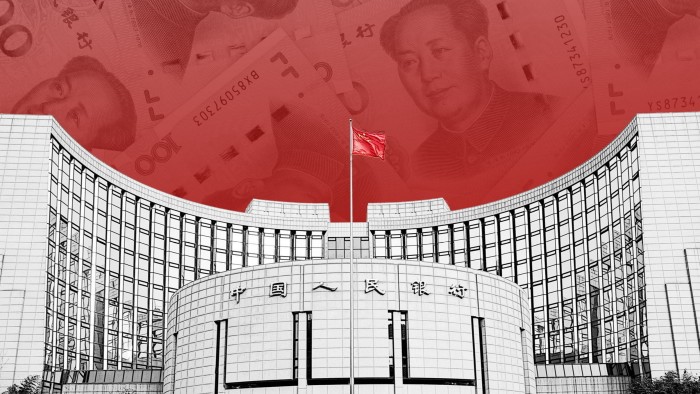Unlock the Editor’s Digest for free
Roula Khalaf, Editor of the FT, selects her favourite stories in this weekly newsletter.
China is to launch its largest sale of offshore bills in a move to support the renminbi, as Wall Street boosts its bets against the currency over weakness in the world’s second-largest economy and Donald Trump’s threat of tariffs.
The People’s Bank of China on Thursday said it would sell Rmb60bn ($8.2bn) of bills in Hong Kong in January, its largest single sale since auctions began in the territory in 2018.
The bill sale will have the effect of soaking up renminbi liquidity and making it more expensive for traders to bet against the currency in markets outside China.
The renminbi has weakened past Rmb7.33 a dollar in the opening trading days of 2025, reaching its lowest level since September 2023 in a challenge to Chinese authorities, which have vowed to maintain the currency at a stable level.
Investors, however, believe the central bank will tolerate a gradual weakening of the currency. Global banks anticipate the renminbi will hit Rmb7.5 a dollar or beyond by the end of the year, a level last seen in 2007, with serious implications for global trade.
If it hits that level, China has $3.2tn in official reserves and an estimated $1tn more in unofficial support from state banks and exporters that it could deploy to protect the currency.
With the announcement of the bill sale on Thursday, “they are sending a sign that even with the tariff situation they are trying their best to protect the currency”, said Ju Wang, head of China rates and foreign exchange strategy at BNP Paribas.
The renminbi has weakened despite the PBoC keeping its currency fix — an official daily exchange rate around which renminbi traded in mainland China can deviate by 2 per cent — stable at about Rmb7.19 a dollar for the past month.
Outside mainland China, the renminbi is freely traded and not subject to the trading band. China’s central bank has tried to manage depreciation in offshore markets with unofficial guidance and discreet interventions.
In one sign of the latter, the overnight rate on Tuesday to borrow offshore renminbi in Hong Kong spiked above 8 per cent, the highest level in three years, making it more expensive for investors to bet against the currency.
The central bank is able to engineer spikes in these rates by draining the market of offshore renminbi with, for example, bill issuance.
Still, several investors told the Financial Times they were opting to short the renminbi offshore, believing the currency will weaken further.
Recent moves in the currency “are all indicative of a trade with legs and a direction in policy where the authorities are pretty comfortable with a slow, managed weakening versus the dollar and some sense of stability versus a broader basket of currencies”, said a hedge fund manager.
Most investors expect the biggest weakening to occur once the new Trump administration’s tariff policies are better known. Trump is set to be inaugurated on January 20.
JPMorgan, Barclays and BNP Paribas all forecast the renminbi dropping to Rmb7.5 a dollar towards the end of 2025. Nomura forecasts it hitting Rmb7.6 by May, while Bank of America anticipates it will hit Rmb7.4 by the end of the year.
Some anticipate it could weaken past Rmb7.5. “Our working assumption is that the currency falls to between Rmb8 and Rmb8.1 by the middle of [2025], conditioned on this relatively large tariff shock,” said Robert Gilhooly, senior emerging markets economist at Abrdn.
Compared with the previous round of Trump tariffs in 2017, “the risks are skewed towards a bigger depreciation this time round”, he added. That “will allow a fairly sizeable [currency] adjustment to take the pressure off tariffs; this is what we saw last time round”.
A cheaper renminbi would help Chinese exporters remain competitive in the face of higher tariffs in the US, but it could also leave China open to the accusation of currency manipulation, a charge levelled by the previous Trump administration.
https://www.ft.com/content/215e505e-3e46-4fbc-9cf6-a9ba0a95afeb


